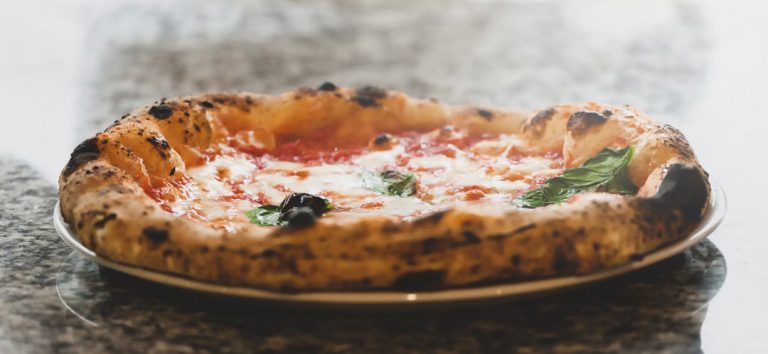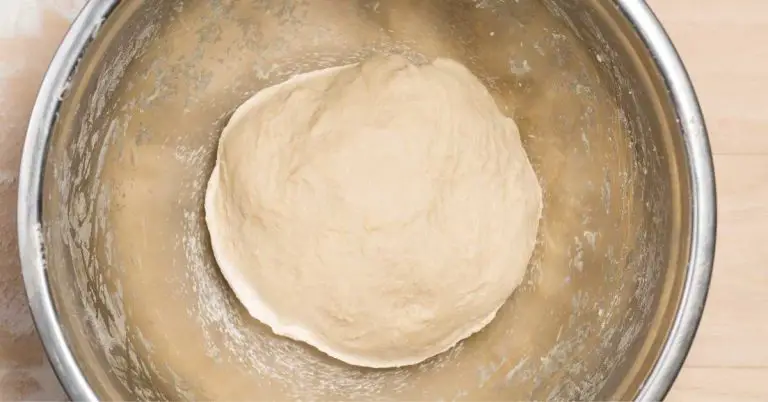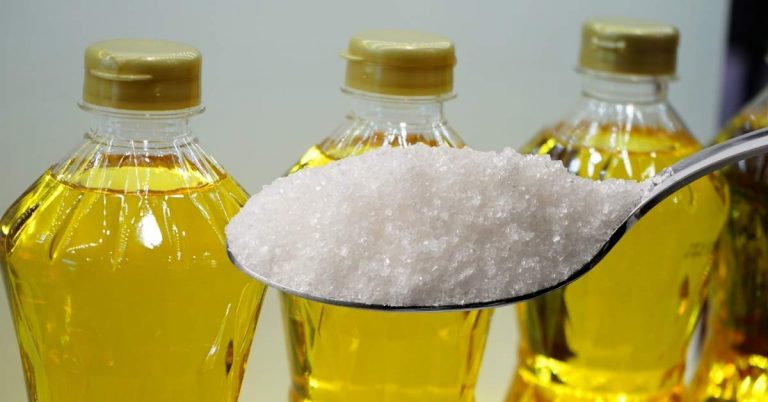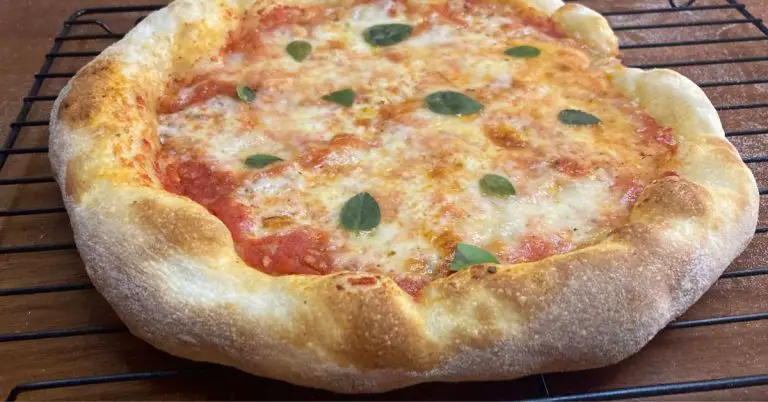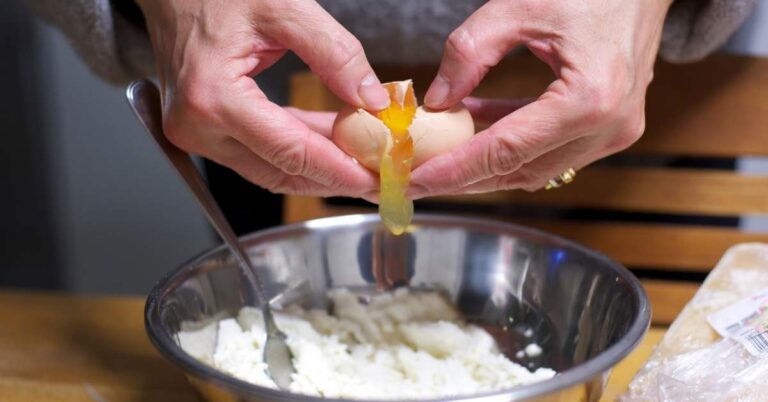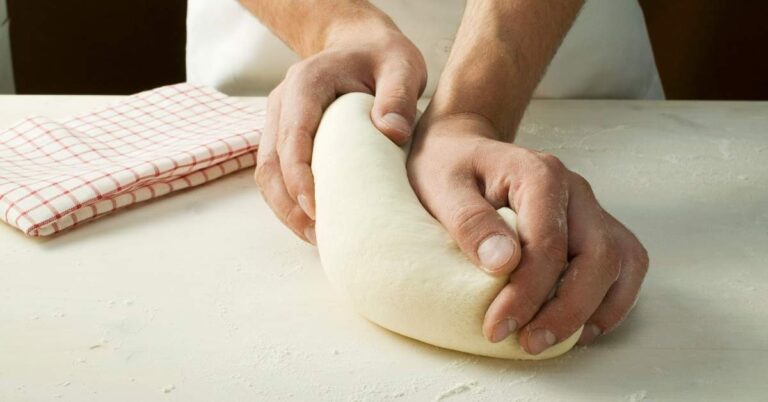When Making Pizza What Goes On First?
You might think pizza is pizza, but it varies quite a bit from place to place. When I moved from NYC to a small town, I was surprised to see the pizza toppings placed under the cheese. This was very different from what I grew up seeing and it got me thinking about why we make pizza the way we do. Why do we put the sauce on before the cheese? Which is better?
When making a pizza, the sauce should go on first then the cheese and other toppings, in that order. This allows the cheese and other toppings to cook better under direct heat, which is what most people prefer.
But this order is certainly not the only way, and many regional styles of pizza do it differently. There are even some benefits to putting the toppings on in different orders. Let’s go over some different scenarios and fully explore what to put first on a pizza and when.
Sauce On First, Then Cheese, Then Other Toppings
From New York City to Naples – sauce then cheese then other toppings is the standard way to make pizza around the world. And for good reason – it works best for most cases.
When you put the cheese on top of the sauce, the cheese gets direct exposure to the heat of the oven and melts very quickly. This makes low-moisture mozzarella cheese, for example, bubble and slightly browned like most people prefer on pizza.
Any extra toppings should go on after the cheese, for the same reasons. Putting toppings under the cheese will make them soggy and won’t allow any meat or vegetables to sear under the heat. In fact, I even recommend pre-cooking most pizza toppings to remove excess moisture and keep the toppings dry.
Another reason why people prefer this order is because it’s by far the easiest way to prepare pizza. Spreading sauce is easier on a plain dough, and it’s easier to gage adequate cheese coverage when there aren’t already other toppings on it.
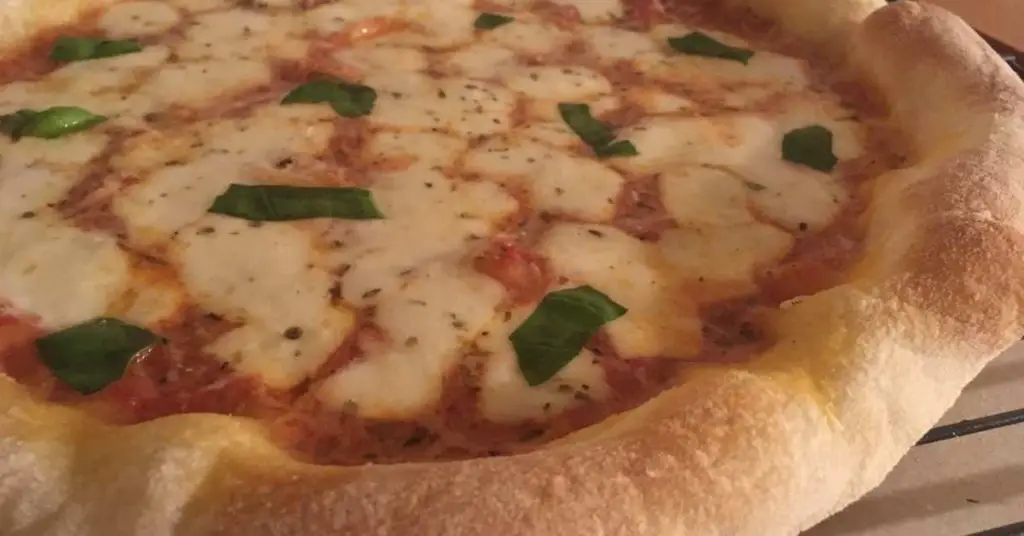
Pros:
- Mozzarella melts quickly
- Good browning of cheese
- Extra toppings get crisped
Cons:
- Sauce tends to cook less
- Sauce can sometimes get watery under the cheese
Cheese First Then Sauce
This is the major alternative to sauce first then cheese in the pizza world, and it’s actually quite popular in many regional styles.
The Detroit style pizza, for example, puts the sauce on top of the cheese in “racing stripes” in their characteristically square shaped, deep-dish pan pizza.
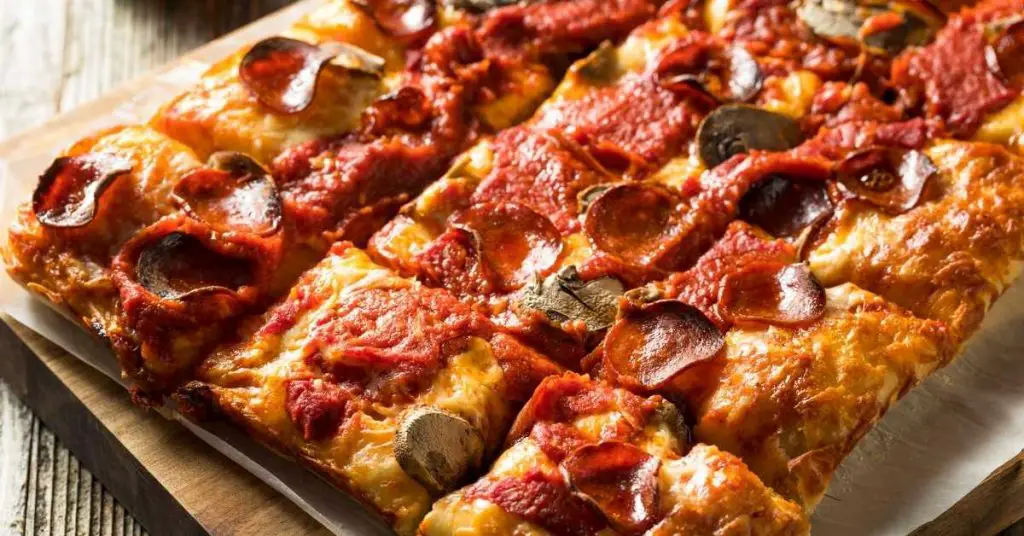
The “upside-down” slice is often offered as an alternative to the standard cheese pizza in many pizza places around NYC. This style is exactly what it sounds like – cheese first, then sauce. It’s a favorite style of pizza for many New Yorkers, despite sauce first then cheese being by far the most common in the area.
The benefit to this style really comes down to personal taste. The sauce on top gets direct exposure to the oven’s heat, so it gets cooked more. The more tomato sauce cooks, the more the flavor of the sauce changes. In some cases it can become more sweet, and the heat exposure can dry it out making it more like a tomato paste when the pizza is finished baking.
Another benefit to putting the sauce on last, in theory, is that it prevents the dough from becoming soggy from the wet sauce. However, I think in most cases if the crust and sauce are adequately prepared and applied in the right quantity then this shouldn’t be a problem.
This order of doing things is most common in American style pizza and not as much for Neapolitan. The closest Neapolitan equivalent would be a pizza marinara which is simply sauce, garlic and oregano, but this pizza doesn’t have cheese anyways so the comparison can only go so far.
And of course, any talk of cheese before sauce wouldn’t be complete without mentioned deep dish Chicago style pizza. However, this style of pizza is completely different from most styles and is much more similar to a pie, so the sauce on top makes perfect sense here.
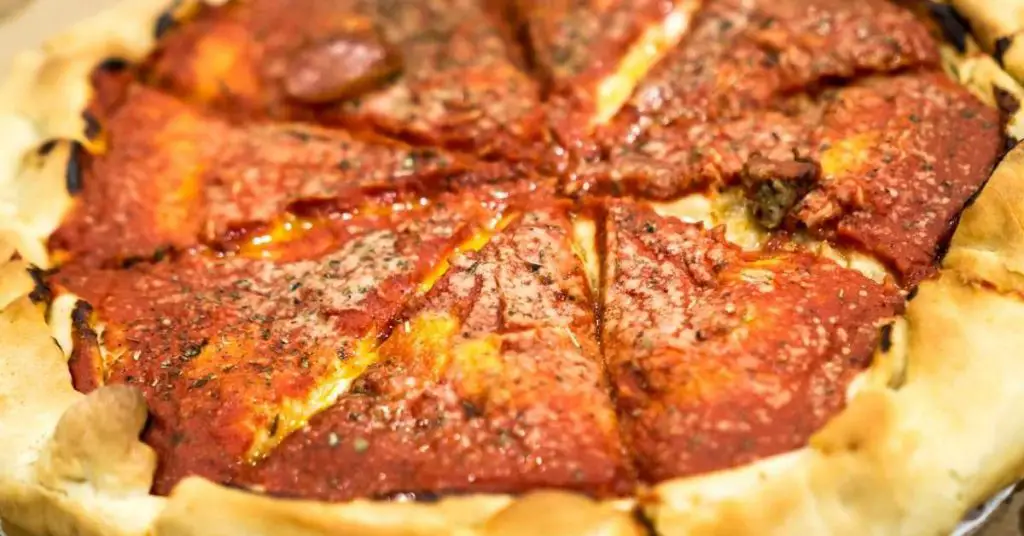
Pros:
- Sauce dries out and gains nice texture
- Sauce can get a bit sweeter or tangier
Cons:
- Cheese will not brown under sauce
Should Extra Toppings Go Over Or Under The Cheese?
I alluded to this in the introduction to this post – toppings under the cheese.
When I first moved to a small town far away from NYC, I was surprised to see toppings like meat and vegetables placed under the cheese. This seemed crazy to me since it makes pepperoni to turn out more like a wet salami or a ham than the crispy pepperoni I had been used to.
But in this small town, wet soggy toppings are what people are used to, and they like it. So I can’t really judge what’s ultimately a matter of personal taste.
I will say, however, that when I asked many of these people why they prefer it that way, they gave me some funny answers. People told me that they liked the toppings under the cheese because it protected them from the heat of the oven and locked in the flavor. I couldn’t have disagreed more.
Far from locking in the flavor, you’re really just locking in the moisture when you put toppings under the cheese. If anything, you’re actually preventing the full flavor of the toppings from being released because they’re not getting cooked enough. Cooking your toppings on top of the cheese, or even pre-cooking them beforehand can bring out a much richer flavor and improved texture.
If you are cooking something that would, in theory, disintegrate or burn under direct heat, my advice would be to put those toppings on last instead. Sometimes I even do this with pepperoni – I’ll pre-cook it and put it on the pizza when it’s halfway cooked in order to avoid a load of oils and fats spilling out onto my pizza.
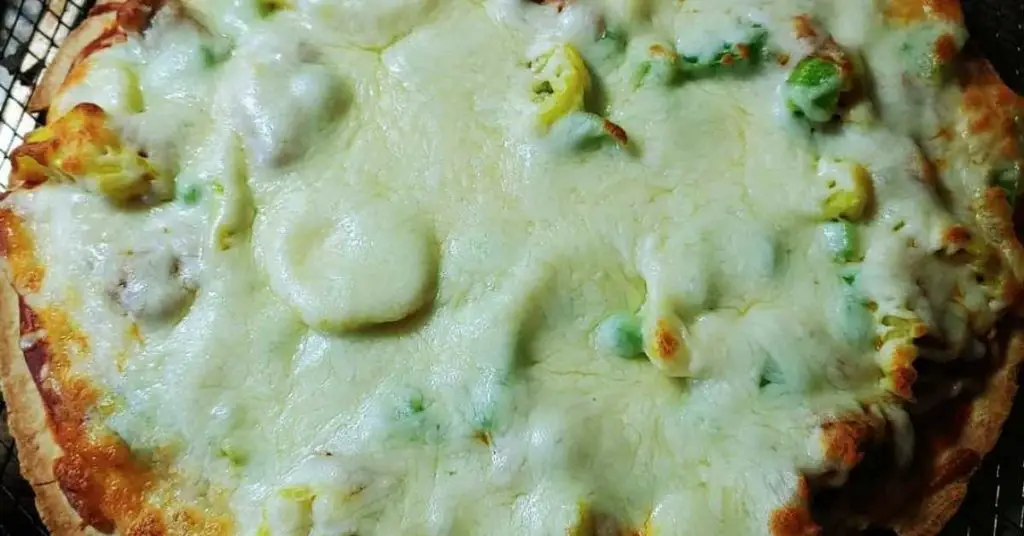
Pros:
- None
Cons:
- Soggy, steamed toppings
When To Put Toppings On A Pizza
Of course, what you put on your pizza first, and how, is mostly a matter of taste. However, there are some basic rules of thumb you should be following to get the most out of your pizza.
For example, if you want a nice puffy crust you should always make sure to leave at least a 1 inch rim around the pizza dough without sauce. The sauce will weight it down and prevent it from rising while baking, and the moisture will prevent it from crisping, too.
Alternatively, if you want a pizza that doesn’t have any exposed crust, you should spread the tomato sauce right to the rim to prevent them from rising. This is especially useful for making pan pizzas that are topped from edge to edge.
Another piece of advice I can offer is to consider if you’re putting the cheese on too early. It’s very common for homemade pizza makers in Italy to put the cheese on halfway through the baking period. This is done because the cheese can burn with the longer baking times that are common in home ovens. This is especially true when you’re dealing with fresh mozzarella because it can burn and crust over easily with longer baking times.
Best Of Both Worlds?
If you like the taste of a sauce that’s been dehydrated and cooked more but still want the cheese on top, here’s a tip for you.
Pre-cook your sauce in a saucepan just before topping the pizza. This will give the sauce a head-start cooking before it gets buried under cheese and other toppings.
But don’t cook your sauce too long or it will end up tasting like spaghetti and you’ll lose some of the natural flavor of the tomatoes.
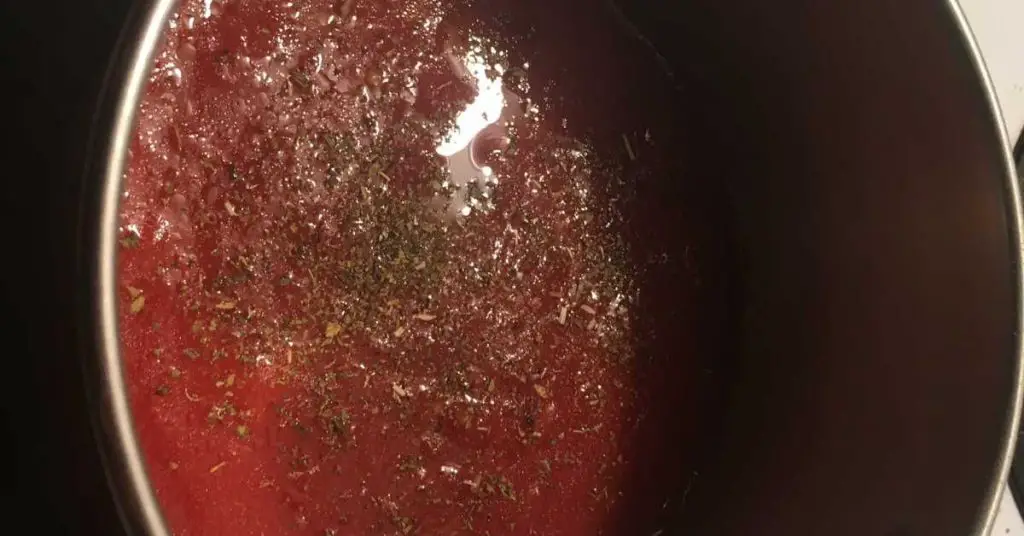
Final Thoughts
How and when you put toppings on your pizza is largely a matter of personal taste. But there is a reason why most pizza around the world is made with the sauce first, then cheese and then extra toppings.
Spreading pizza sauce on a plain pizza dough is easier from the perspective of the pizza maker. It’s also cleaner to eat from the perspective of the consumer, since any dripping or running sauce will be contained by the cheese.
But there are styles of pizza that do all this in a different order. For example, Detroit and Chicago styles of pizza put the sauce on last. The “upside-down” pizza style that’s popular in NYC does this as well. One of the benefits to this style is that the sauce gets a chance to cook longer which can sometimes bring out extra flavor. The downside to this is that the cheese will never brown, but it will melt nicely.
And in terms of extra toppings, where you put them is up to you. But I don’t see any benefits to placing toppings under the cheese and there are lots of reason to put them on top. The downsides to putting them under the cheese is that they will retain moisture and get soggy. Gross!

